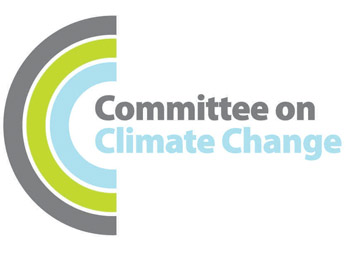Aurora Energy Research (2016)
Biomass conversions & the system cost of renewables
Key Finding: Intermittent renewables carry costs that biomass conversions can address.
![]()
Leading researchers and international organizations agree that sustainable, renewable wood bioenergy is a key tool in the global effort to mitigate climate change. Below is an ongoing, frequently updated directory of the academic research, papers and studies documenting the GHG benefits, forest growth analysis, and other positive contributions wood bioenergy is making to the energy sector.
Biomass conversions & the system cost of renewables
Key Finding: Intermittent renewables carry costs that biomass conversions can address.
![]()
Modeling the impacts of wood pellet demand on forest dynamics in southeastern United States
Authors: Duden et al. (Utrecht University, North Caroline State University, University of Munster, University of Groningen)
Key Finding: High demand scenarios for wood pellets retain thousands of square kilometers of forests.




Tags: Forest Growth
The State – Thomas Straka: Straka: Pellet mills will result in more S.C. forests, not fewer
Author: Thomas Straka, Interim Department Chair and Professor, Forestry and Environmental Conservation Department, Clemson University
Key Finding: “Vibrant timber markets” grow forests because they “lead forest owners to actively invest in sustainable forest management.”

Tags: Forest Growth
Authors: Katie Hoover, Specialist in Natural Resources Policy, CRS. Anne A. Riddle, Analyst in Natural Resources Policy, CRS.
Key Findings:
1: U.S. forest carbon stocks have increased 10% since 1990.
2: U.S. forests sequestered 12% of the US’ gross annual greenhouse gas emissions in 2018.
3: Wood products, including using wood as a substitute for fossil fuel, is one of three “primary strategic approaches for optimizing forest carbon sequestration and storage.”

Deep Decarbonization Of The Electric Power Sector Insights From Recent Literature
Authors: Jesse D. Jenkins (PhD Candidate, Massachusetts Institute of Technology) and Samuel Thernstrom (Executive Director of the Energy Innovation Reform Project)
Key Finding: Biomass can help “form the foundation” and is “indispensable” for deep decarbonization goals.


Authors: J. S. Baker (RTI International) et al.
Key Finding: “Our results show that forest bioenergy expansion can complement carbon sequestration policies in the near- and medium-term, reducing marginal abatement costs and increasing mitigation potential.”

Potential greenhouse gas benefits of transatlantic wood pellet trade
Authors: Puneet Dwivedi (University of Georgia), Madhu Khanna (University of Illinois), Robert Bailis (Stockholm Environment Institute), Adrian Ghilardi (Universidad Nacional Autónoma de México)
Key Finding: Wood pellets for electricity generation can reduce GHG emissions in the United Kingdom between 50% and 68% compared to fossil fuels, and overall, the “use of imported wood pellets for electricity generation could help in reducing the United Kingdom’s GHG emissions.”





Carbon savings with transatlantic trade in pellets: accounting for market-driven effects
Authors: Weiwei Wang (University of Illinois), Puneet Dwivedi (University of Georgia), Robert Abt (North Carolina State University) and Madhu Khanna (University of Illinois)
Key Finding: “Across different scenarios of high and low pellet demand that can be met with either forest biomass only or with forest and agricultural biomass, we find that the GHG intensity of pellet based electricity is 74% to 85% lower than that of coal-based electricity.”




Economic Approach to Assess the Forest Carbon Implications of Biomass Energy
Authors: Adam Daigneault (Landcare Research, Auckland, New Zealand), Brent Sohngen (The Ohio State University), and Roger Sedjo (Resources For the Future)
Key Finding: When you account for market factors, increased demand for wood biomass energy “increases timber prices and harvests, but reduces net global carbon emissions because higher wood prices lead to new investments in forest stocks.”




Tags: Forest Growth
Taxonomy: Final report of the Technical Expert Group on Sustainable Finance (March 2020)
Key Finding:
1: Bioenergy can make a “Substantial Contribution” to climate change mitigation.
2: “Forest based products can have climate mitigation benefits when used in other economic sectors (enabling), through the reduction of GHG emissions and substitution effects. Two forms of ‘substitution’ are foreseen. The substitution of GHG intensive materials with harvested wood products (HWP) (e.g. wood-based raw materials and products used in construction), and the substitution of fossil-based fuels” (42).

Historical Perspective on the Relationship between Demand and Forest Productivity in the US South
Key Finding: “Since the middle of the twentieth century, the amount of timberland—unreserved, productive forest land—in the US South has remained stable, increasing by about 3 percent between 1953 and 2015. During this period, economic growth and increased construction spurred consumer demand for forest products, which led timber harvests—or removals—to increase 57 percent. Yet over this same period, the amount of wood fiber—or inventory—stored in Southern forests increased 108 percent.”

Tags: Forest Growth
Authors: (Reid et al.) David and Lucile Packard Foundation, Stanford University
Key Finding: Waste biomass and good stewardship biomass (as practiced in the US Southeast) can reduce GHG emissions and increase sustainability.



Authors: Jan Gerrit Geurt Jonker (University Utrecht), Martin Junginger (University Utrecht), and Andre Faaij (University Utrecht)
Key Finding: “We consider the landscape‐level carbon debt approach more appropriate for the situation in the South‐eastern United States, where softwood plantation is already in existence, and under this precondition, we conclude that the issue of carbon payback is basically nonexistent.”


Authors: Hanssen et al. (Radboud University Nijmegen, Utrecht University, Oak Ridge National Laboratory)
Key Finding: Wood pellets reduce GHG emissions within 0-29 years, with commercial thinnings and harvest residues leading to GHG benefits within several years.




On the Timing of Greenhouse Gas Mitigation Benefits of Forest-Based Bioenergy
Key Finding: “The GHG effects of forest bioenergy should be investigated at the scale applicable to the issue concerned: policymakers act to influence developments at the international, national, and larger regional scale, thus the GHG effects of forest-based bioenergy should be determined across the whole national or regional estate, that is, at landscape scale.”

Tags: Forest Growth
Key Finding: “Scientists acknowledge that using more bioenergy is one possible way to reduce dependence on fossil fuels, while encouraging management of land as a carbon ‘sink’ is an option for reversing deforestation or for expanding forest area.”

Key Finding: Most IPCC pathways to reducing global GHG emissions “involve a large share of bioenergy. Biomass is a renewable resource with large potential for expansion, and unlike other renewable resources, biomass can be stored and converted to different energy carriers. It can thus play a critical role in facilitating transition to low-carbon energy systems.”

Tags: Complementing Other Renewables, Necessary To Meet Global Commitments
January 2018: Is energy from woody biomass positive for the climate?
Key Finding: “Energy from woody biomass can be very positive for the climate, particularly when applying sustainable forest management practices, and when the biomass is used efficiently (such as in combined heat and power plants and biorefineries.”

Global Energy Transformation A Roadmap to 2050
Key Finding: “Sustainably sourced bioenergy is also an important component of the energy transition.”

Roundwood Use by Southern Wood Pellet Mills: Findings from Timber Product Output Mill Surveys
Authors: Consuelo Brandeis (USDA Forest Service), Karen Lee Abt (USDA Forest Service)
Key Finding: Biomass comprises around 3 percent of wood output harvests in the US Southeast.
![]()

Tags: Forest Products Economy
Accounting for Carbon Dioxide Emissions from Bioenergy Systems
Author: Gregg Marland, Appalachain State University
Key Finding: “The IPCC inventories do not exempt bioenergy systems. They very purposefully account for emissions from fossil fuels where and when they occur, and they account for changes in biological stocks of carbon where and when they occur.”


Carbon, Fossil Fuel, and Biodiversity Mitigation With Wood and Forests
Authors: Chadwick Dearing Oliver (Yale), Nedal T. Nassar (Yale), Bruce R. Lippke (University of Washington), and James B. Mccarter (University of Washington).
Key Finding: “Maximizing forest CO2 sequestration may not be compatible with biodiversity. More CO2 can be sequestered synergistically in the products or wood energy and landscape together than in the unharvested landscape. Harvesting sustainably at an optimum stand age will sequester more carbon in the combined products, wood energy, and forest than harvesting sustainably at other ages.”



Science Fundamentals of Forest Biomass Carbon Accounting
Key Finding: “The long-term benefits of forest biomass energy are well-established in science literature,” the letter reads. “Forest biomass energy yields significant net decreases in overall carbon accumulation in the atmosphere over time compared to fossil fuels.”

Bioenergy in the UK –The state of play
Key Findings:
1: “Bioenergy is recognised as a key renewable energy technology, and an essential component of a low carbon energy economy, internationally and in the UK, playing an important role in providing electricity, heat and transport fuels.
2: In the last 10 years bioenergy’s contribution to the UK has grown strongly, helped by a supportive policy framework. Bioenergy is the largest contributing renewable technology in the UK, providing 7.4% of primary energy supply and: 11% of UK electricity 4% of energy used to produce heat 2% of energy needed in the transport sector.
3: Bioenergy has led to a “4% reduction in UK greenhouse gas emissions.”

Tags: Complementing Other Renewables, Reducing Carbon Emissions
Biomass much better for the climate than natural gas (Dutch)
Authors: Royal HaskoningDHV commissioned by the Dutch Association for Sustainable Energy
Key Finding: “Woody biomass is 70 to more than 90 percent more climate-friendly than natural gas.”

Forests: Carbon sequestration, biomass energy, or both?
Authors: Alice Favero (Georgia Institute of Technology), Adam Daigneault (University of Maine), and Brent Sohngen (Ohio State University)
Key Finding: “Increased bioenergy demand increases forest carbon stocks thanks to afforestation activities and more intensive management relative to a no-bioenergy case…Incentivizing both wood-based bioenergy and forest sequestration could increase carbon sequestration and conserve natural forests simultaneously.”



Does Wood Bioenergy Increase Carbon Stocks in Forests?)
Authors: Roger Sedjo and Xiaohui Tian
Key Finding: An increase in wood biomass “will not reduce forest and forest carbon stocks, but rather will increase the forest and forest carbon.”

Tags: Forest Growth
Forest Carbon Accounting Considerations in US Bioenergy Policy
Authors: Reid A. Miner (NCASI), Robert C. Abt (North Carolina State University), Jim L. Bowyer (University of Minnesota), Marilyn A. Buford (USDA Forest Service), Robert W. Malmsheimer (SUNY ESF), Jay O’Laughlin, Elaine E. Oneil, Roger A. Sedjo, and Kenneth E. Skog (US Forest Service)
Key Findings:
1: “As long as land remains in forest, long-term carbon mitigation benefits are derived from sustainably managed working forests that provide an ongoing output of wood and other biomass to produce long-lived products and bio-energy, displacing GHG-intensive alternatives.”
2: “The demand for wood keeps land in forest, provides incentives for expanding forests and improving forest productivity, and supports in-vestments in sustainable forest management that can help offset the forest carbon impacts of increased demand.”
3: “GHG benefits from using forest residues to produce electricity are generally observed in less than a decade or two.”






Land use: Policies for a Net Zero UK (2020)
Key Findings:
1: “Sustainably managed forests are important for reducing emissions across the economy. They provide a store of carbon in the landscape and harvested wood can be used sustainably for combustion and carbon sequestration in the energy sector…(33)”
2: “In all scenarios for the achievement of net-zero, sustainably harvested biomass can play a significant role, provided it is prioritised for the most valuable end-uses (98).”
3: “Globally, a scale-up in bioenergy production is needed to meet the Paris Agreements goals, and the UK should be at the forefront of developing and demonstrating good governance practices (100).”

Tags: Necessary To Meet Global Commitments, Reducing Carbon Emissions
IPCC 2018 Special Report Global Warming of 1.5 ºC
Key Finding: Bioenergy is included in all scenarios that limit climate change.

IPCC 2019 Special Report on “Climate Change and Land”
Key Findings:
1: “Sustainable forest management can reduce the extent of forest conversion to non-forest uses. Sustainable forest management aimed at providing timber, fiber, biomass, non-timber resources, and other ecosystem functions and services, can lower GHG emissions and can contribute to adaptation. (high confidence).” (SPM B5.4, page 25)
2: “All assessed modelled pathways that limit warming to 1.5ºC or well below 2°C require land-based mitigation and land-use change, with most including different combinations of reforestation, afforestation, reduced deforestation, and bioenergy.” (SPM B7, page 26)
3: “In the long term, a sustainable forest management strategy aimed at maintaining or increasing forest carbon stocks, while producing an annual sustained yield of timber, fiber, or energy from the forest, will generate the largest sustained mitigation benefit…”. (Ch 4, 4.8.5, page 66)

Tags: Forest Growth, Necessary To Meet Global Commitments, Reducing Carbon Emissions
Authors: Dr. Puneet Dwivedi, Associate Professor, Sustainability Sciences, University of Georgia Warnell School of Forestry, Madhu Khanna, Professor of Agricultural and Consumer Economics, University of Illinois, and Madisen Fuller, Research Assistant, University of Georgia
Key Finding: “We show that with either a stand or landscape perspective, using some or all of the biomass for electricity generation will lead to a net higher carbon stock on the land than leaving trees unharvested after a break-even period. The length of the break-even period is shorter when a higher proportion of the tree is used for wood pellets; it is a decade or two with the use of pulpwood, and two to three years with the use of whole trees in the manufacture of wood pellets.”


Authors: Dr. Puneet Dwivedi, Associate Professor, Sustainability Sciences, University of Georgia Warnell School of Forestry, Md Farhad H. Masum, Teaching Assistant, University of Georgia Warnell School of Forestry, and Kamalakanta Sahoo, Research Associate, US Forest Service
Key Finding: Wood-based bioenergy can yield carbon savings of 77% to 99% compared to fossil fuel alternatives, especially coal.


Authors: Madhu Khanna, Professor of Agricultural and Consumer Economics, University of Illinois. Weiwei Wang, Postdoc Research Associate, University of Illinois
Key Finding: “The greenhouse gas intensity of wood pellet-based electricity is between 74 to 85 percent lower than that of coal-based electricity…”

Reference scenarios for evaluating wood pellet production in the Southeastern United States
Authors: Esther S. Parish (US Department of Energy Oak Ridge National Laboratory), Virginia H. Dale (US Department of Energy Oak Ridge National Laboratory), Keith L. Kline (US Department of Energy Oak Ridge National Laboratory), and Robert C. Abt (North Carolina State University)
Key Finding: “…the lack of a market for wood products in the SE US can lead to unhealthy, unmanaged forests or forest conversion to other uses.”


Tags: Forest Growth
Wageningen University & Research: Insight in sustainable export of pellets from Southeast US
Key Finding: “On the basis of these data, it becomes clear that the sustainable export potential from Southeastern US is around 35 million tonnes of pellets – double the current production.”

Tags: Sustainability